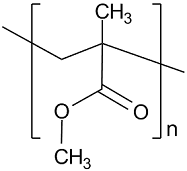Government bans import of a synthetic resin, Polymethyl Methacrylate 09/09/2019 – Posted in: Daily News – Tags: bisphenol-A
POLYMETHYL METHACRYLATE
For: Preliminary
Topics covered:
- What is polymethyl methacrylate?
- What are its advantages and properties?
News Flash
The government has banned the import of a synthetic resin, polymethyl methacrylate (PMMA), with effect from September 1, 2019.
- PMMA is a shatterproof replacement for glass.
Highlights
- Directorate General of Foreign Trade (DGFT) cleared that the import policy of polymethyl methacrylate is revised from free to prohibited from September 1.
- DGFT is an arm of the commerce ministry which deals with export- and import-related policies.
Polymethyl Methacrylate (PMMA)
- Polymethyl methacrylate (PMMA) is a strong, tough, and lightweight material.
- PMMA is also known as acrylic, acrylic glass, or plexiglass.
- Crylux, Plexiglas, Acrylite, Lucite, and Perspex among several others is a transparent thermoplastic.
- PMMA is often used in sheet form as a lightweight or shatter-resistant alternative to glass.
- The same material can be used as a casting resin, in inks and coatings, and has many other uses.

Advantages
- PMMA is an economical alternative to polycarbonate (PC) when tensile strength, flexural strength, transparency, polishability, and UV tolerance are more important than impact strength, chemical resistance and heat resistance.
- PMMA does not contain the potentially harmful bisphenol-A subunits found in polycarbonate.
- It is often preferred because of its moderate properties, easy handling and processing, and low cost.
Properties
- Polymethyl methacrylate has good impact strength, higher than both glass and polystyrene.
- PMMA ignites at 460 °C (860 °F) and burns, forming carbon dioxide, water, carbon monoxide and low-molecular-weight compounds, including formaldehyde.
- PMMA transmits up to 92% of visible light.
- It filters ultraviolet (UV) light at wavelengths below about 300 nm.
- PMMA passes infrared light of up to 2,800 nm and blocks IR of longer wavelengths up to 25,000 nm.
- Colored PMMA varieties allow specific IR wavelengths to pass while blocking visible light (for remote control or heat sensor applications, for example).
- PMMA swells and dissolves in many organic solvents.
Source: BS
READ MORE DAILY NEWS
- The West Bengal (Prevention of Lynching) Bill, 2019
- Nar-Par-Tapi river linking project
- Fit India Movement
- Dindigul lock, Kandangi saree get GI tag
- Status of Policing in India Report 2019
- Influenza A (H1N1) in India – Report 2019
You are on the Best Online IAS preparation platform. You are learning under experts.
We are present on Facebook- Diligent IAS, LinkedIn- Diligent IAS, YouTube- Diligent IAS, Instagram- Diligent IAS. Get in touch with us
